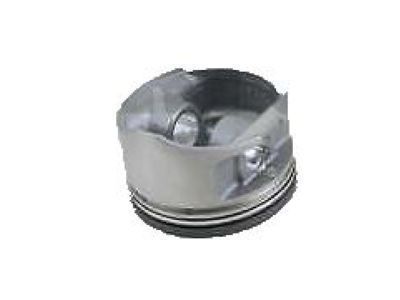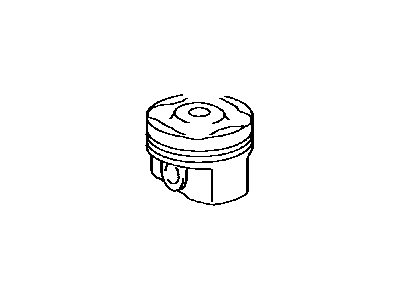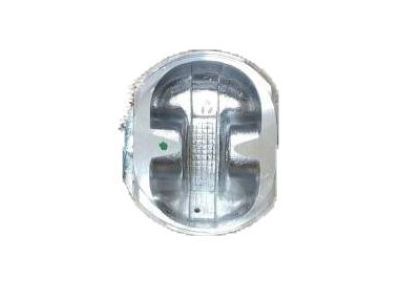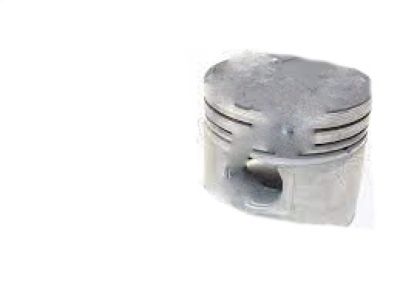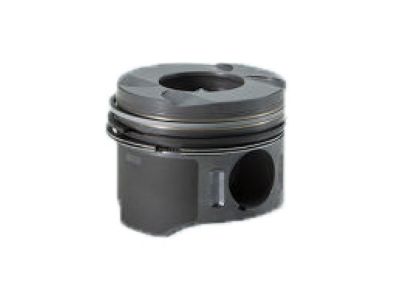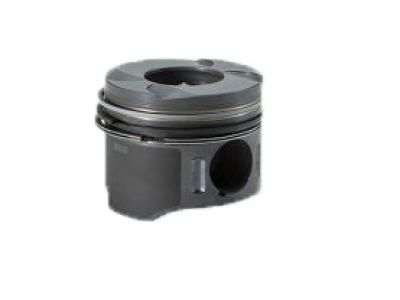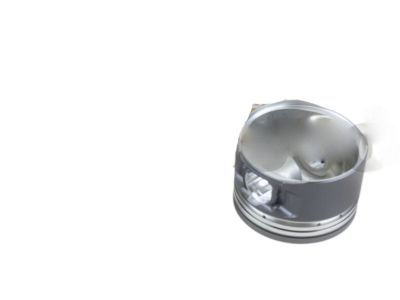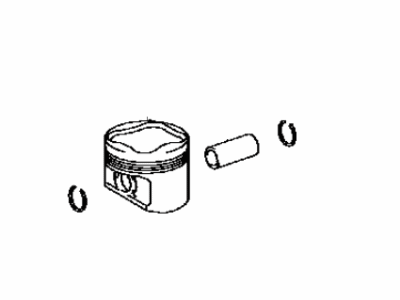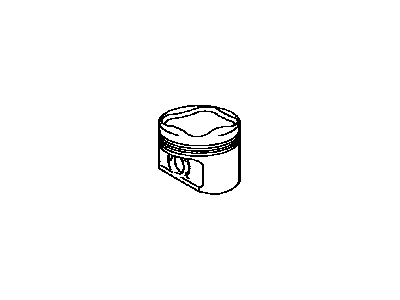

My Garage
My Account
Cart
Genuine Toyota Tacoma Piston
Engine Pistons- Select Vehicle by Model
- Select Vehicle by VIN
Select Vehicle by Model
orMake
Model
Year
Select Vehicle by VIN
For the most accurate results, select vehicle by your VIN (Vehicle Identification Number).
27 Pistons found
Toyota Tacoma Piston Sub-Assembly with Pin
Part Number: 13103-62060$136.20 MSRP: $193.63You Save: $57.43 (30%)Ships in 1-3 Business DaysToyota Tacoma Piston Sub-Assembly with Pin
Part Number: 13101-0P020$99.52 MSRP: $140.28You Save: $40.76 (30%)Ships in 1-3 Business DaysToyota Tacoma Piston Sub-Assembly with Pin
Part Number: 13101-62060-03$123.19 MSRP: $175.14You Save: $51.95 (30%)Ships in 1-3 Business DaysToyota Tacoma Piston Sub-Assembly with Pin
Part Number: 13101-75041$137.58 MSRP: $195.60You Save: $58.02 (30%)Ships in 1-3 Business DaysToyota Tacoma Piston Sub-Assembly with Pin
Part Number: 13101-0P040$105.01 MSRP: $148.03You Save: $43.02 (30%)Ships in 1-3 Business DaysToyota Tacoma Piston Sub-Assembly with Pin
Part Number: 13301-0P030$92.26 MSRP: $130.05You Save: $37.79 (30%)Ships in 1-3 Business DaysToyota Tacoma Piston Sub-Assembly with Pin
Part Number: 13101-31030$96.51 MSRP: $136.05You Save: $39.54 (30%)Ships in 1-3 Business DaysToyota Tacoma Piston Sub-Assembly with Pin
Part Number: 13103-75130$117.69 MSRP: $167.31You Save: $49.62 (30%)Ships in 1-3 Business DaysToyota Tacoma Piston Sub-Assembly with Pin
Part Number: 13101-75130$96.51 MSRP: $136.05You Save: $39.54 (30%)Ships in 1-3 Business DaysToyota Tacoma Piston Sub-Assembly with Pin
Part Number: 13101-62060-01$132.78 MSRP: $188.78You Save: $56.00 (30%)Ships in 1-3 Business DaysToyota Tacoma Piston, LH
Part Number: 13221-0P030-C0$95.36 MSRP: $134.41You Save: $39.05 (30%)Ships in 1-3 Business DaysToyota Tacoma Piston Sub-Assembly with Pin
Part Number: 13103-75200$105.04 MSRP: $148.07You Save: $43.03 (30%)Ships in 1-3 Business DaysToyota Tacoma Piston Sub-Assembly with Pin
Part Number: 13101-62060-02$120.15 MSRP: $170.81You Save: $50.66 (30%)Ships in 1-3 Business DaysToyota Tacoma Piston Sub-Assembly with Pin
Part Number: 13101-75070$23.64 MSRP: $134.77You Save: $111.13 (83%)Ships in 1-2 Business DaysToyota Tacoma Piston, LH
Part Number: 13221-0P030-B0$92.26 MSRP: $130.05You Save: $37.79 (30%)Ships in 1-3 Business DaysToyota Tacoma Piston Sub-Assembly with Pin
Part Number: 13103-75071$160.75 MSRP: $228.53You Save: $67.78 (30%)Ships in 1-3 Business DaysToyota Tacoma Piston Sub-Assembly with Pin
Part Number: 13103-75041$150.88 MSRP: $214.50You Save: $63.62 (30%)Ships in 1-3 Business DaysToyota Tacoma PISTON SUB-ASSY, W/P
Part Number: 13101-F0080$90.38 MSRP: $127.40You Save: $37.02 (30%)Ships in 1-2 Business DaysToyota Tacoma Piston Sub-Assembly with Pin
Part Number: 13101-75071$137.93 MSRP: $196.09You Save: $58.16 (30%)Toyota Tacoma Piston Sub-Assembly with Pin
Part Number: 13101-75200$93.68 MSRP: $132.06You Save: $38.38 (30%)
| Page 1 of 2 |Next >
1-20 of 27 Results
Toyota Tacoma Piston
If you are in demand for superior quality and affordable OEM Toyota Tacoma Piston, then shop with us! We own a wide range of the reduced-priced genuine Toyota Tacoma Piston. You can purchase in confidence as all parts come with a manufacturer's warranty. Any issues with our products? No need to worry as we have a hassle-free return policy to guide you every step of the way.
Toyota Tacoma Piston Parts Questions & Experts Answers
- Q: How to remove and install piston/connecting rod assemblies on 2005 through 2009 Toyota Tacoma?A:Before disassembling the piston and connecting rods, one has to address the cylinder head as well the oil pan. First, make sure to search for crest on the piston top, by traveling the ring at the highest point of cylinder if the crest is found it must be scraper off using a scraper tool. After you have remove the ridges, rotate the engine in such a way that the crankshaft is on top. And on the other side of the connecting rod, measure the connecting rod endplay with feeler gauges to established whether it is beyond the service limit; if so, likely new connecting rods are needed. Identify which connecting rods and caps are for which cylinder, and then remove the connecting rod cap bolts and pull out the connecting rod cap and the bearing insert without dropping the insert. Pry the connecting rod and piston assembly out through the top of the engine, If it is tight, give it a couple of whacks with the hammer handle. Record the diameter of each of the connecting rod bolts and replace all bolts that are of a smaller diameter than that specified. Link up the caps and inserts with past inserts remaining intact to shield the bearing surfaces. Now it is time to inspect and possibly replace the piston and the category of parts referred to as the connecting rods. When changing the piston rings, ensure the end clearance is adequate and that the side play of the piston ring is correct. Spear out the pistons/connecting rods and new rings beside each other in order to match them when installing. Put the top ring into the first cylinder and check the end gap with feeler gauges and correct it if the needed. It then fits the first compression ring which is the oil control ring then the second and third one in the correct position. Before installation, degrease the cylinder walls and edge to clean them, and also making sure the crankshaft is fitted. New bearing inserts are immersed in the new main bearing oil and are without lubrication installed into the connecting rod and cap. Space them in the piston 90 degrees apart, wet the piston and the rings and use a ring compressor during the installation. Place the piston/connecting rod assembly into the cylinder, and better yet, do not force the matter either. After that, using Plastigage, the following should be checked: Crankshaft connecting rod bearing oil clearance , size and condition of the bearing inserts. Remove any Plastigage remaining on the crankshaft journal, lubricate the thrust or main bearing faces with Grease or assembly lube and replace the rod cap with the bolts tightened to factory recommended torque. For the remaining assemblies, clean and check the orientation in the same manner as the first one and continue adding assemblies in the same way. At last, turn the crankshaft to check for any tight-pin and also check the connecting rod end-play again and adjust if required.
Related Toyota Tacoma Parts
Browse by Year
2025 Piston 2024 Piston 2023 Piston 2022 Piston 2021 Piston 2020 Piston 2019 Piston 2018 Piston 2017 Piston 2016 Piston 2015 Piston 2014 Piston 2013 Piston 2012 Piston 2011 Piston 2010 Piston 2009 Piston 2008 Piston 2007 Piston 2006 Piston 2005 Piston 2004 Piston 2003 Piston 2002 Piston 2001 Piston 2000 Piston 1999 Piston 1998 Piston 1997 Piston 1996 Piston 1995 Piston
